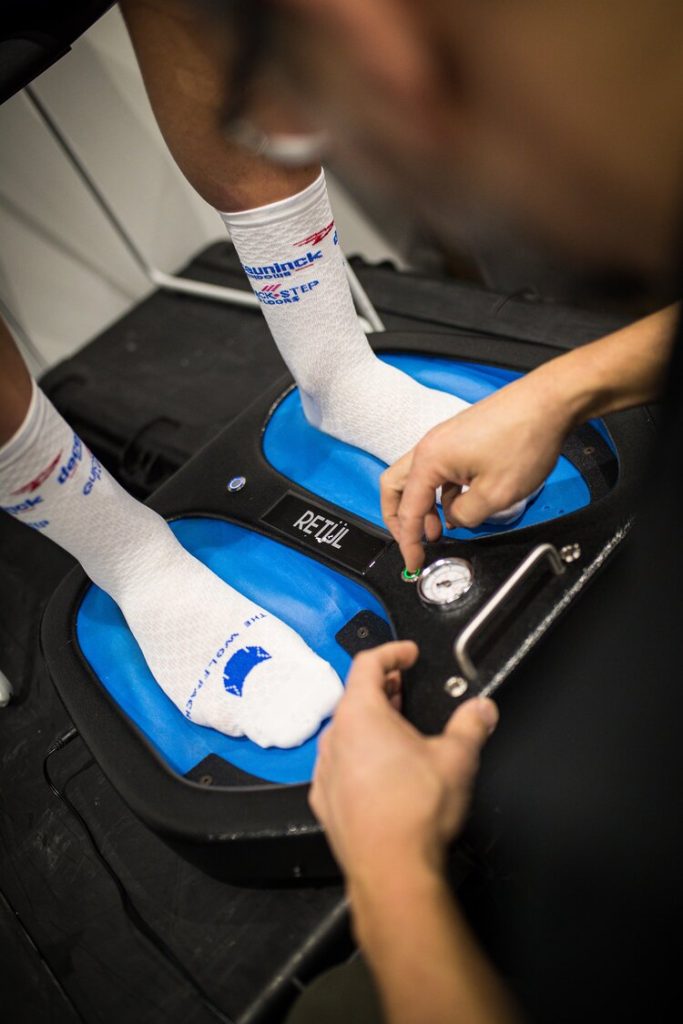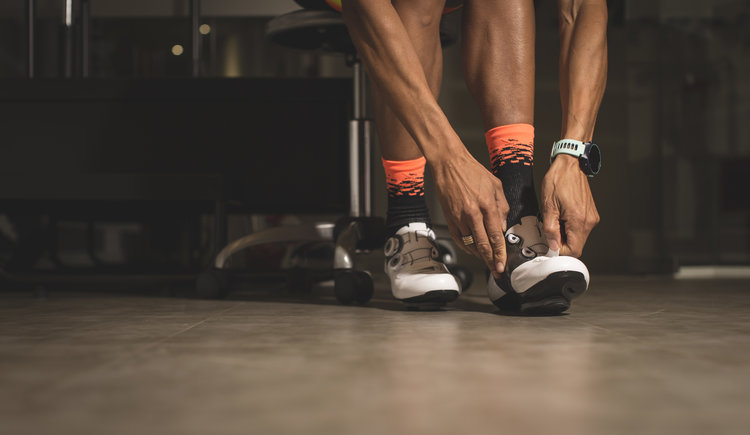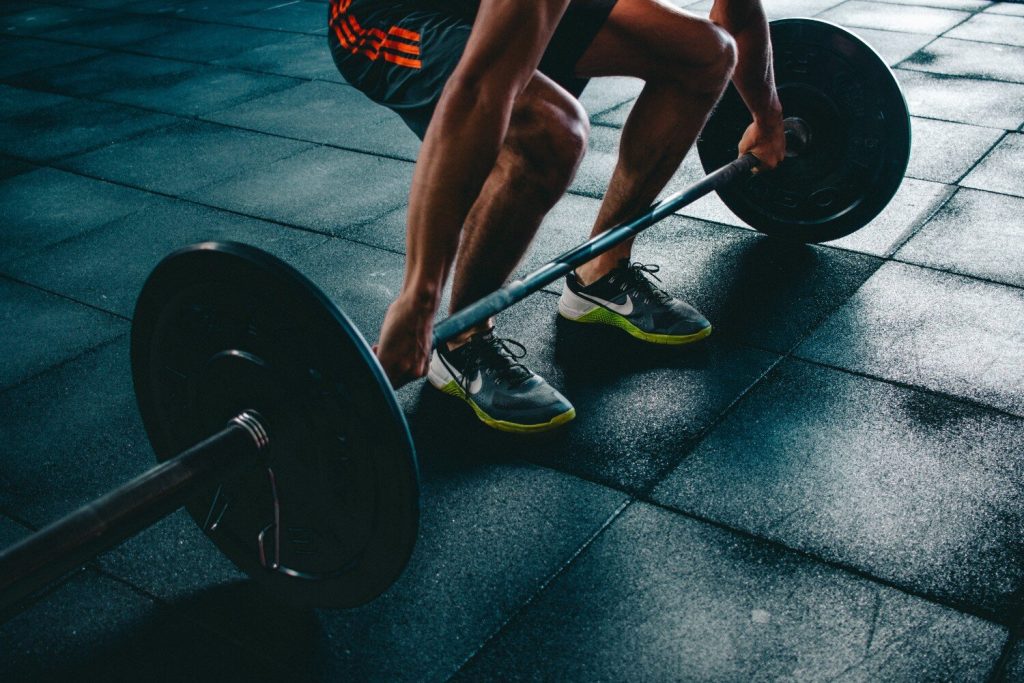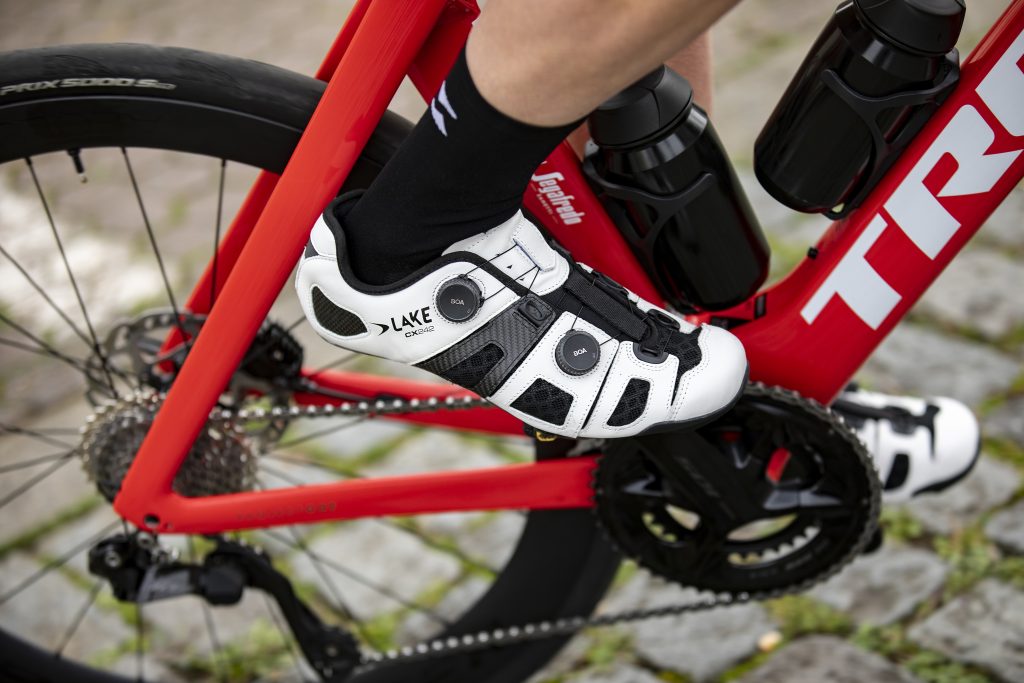The potential benefits of custom insoles for cycling
According to government statistics, around 5 billion miles are cycled in the UK each year, with around 45% of the population owning a bike[i]. For many, cycling is a big part of their daily lives, which involves commuting and transport. Additionally, many cyclists choose to spend countless hours in the saddle on weekends with friends or taking part in races.
As we all know bikes can be expensive, and there are endless hours of fun to be had pouring over the finer details of bike specs (group sets, components, wheels etc..), and at times a little daunting. Some cyclists make the wise decision to get a ‘bike fit’ to ensure correct position, which can optimise power output, comfort and minimise injury risk, or even help reduce symptoms in those already experiencing problems. As part of the bike fit several measurements are taken to optimise the position specifically for that rider, and at Momentum, the bike fit is individualised based upon the riders’ goals, body type, past injury history and of course their bike and riding style.
Contact points are extremely important in cycling, especially the pedals which provide a fixed point of contact. Over the course of a 5-hour ride the pedals rotate approximately 27,000 times for each foot. So, it makes perfect sense that we want our feet to be as comfortable as possible. But is there more to cycling shoes than comfort? Well, according to a study in 2013[ii], riders felt more support in their foot arch and were able to exert greater peak forces, which is consistent with a study in 2010[iii] that suggested cyclists enjoyed an increase in Peak Power of 2.9% and Mean Power by 3.8%. A 2004[iv] study showed that foot orthoses prevented the arch from collapsing, which resulted in increased pedal efficiency and better knee control, and a study in 2000[v] suggested that pronation of the foot during cycling can lead to knee misalignment.
In a 1994[vi] study, it was suggested that only 4% of the population are suited to conventionally made pedals and cycling shoes, so where does that leave the other 96%? Most cyclists probably feel no pain and are not overly concerned with power output. But for those who are either uncomfortable or have pain when riding, foot orthotics could be a consideration. At Momentum Sports Injury Clinic we have access to the Retül Footbed System[vii] that captures the exact dimensions of feet, whereby custom orthotics can be made to measure, based on your individual foot anatomy.
Created in 50-mins or less, you will have a ready-to-use custom footbed that is specifically moulded to the contours of the foot. Can be booked as a standalone appointment for £150 or alongside a bike fit appointment for £115. To book click here.
[i] We are Cycling UK (2022) ‘Cycling UK’s Cycling Statistics’ Available at: https://www.cyclinguk.org/statistics
[ii] Shultz S, et al (2013) ‘A systematic review of outcome tools used to measure lower leg conditions’, Int J Sports Phys Ther. Dec;8(6):838-48. PMID: 24377070; PMCID: PMC3867077
[iii] Dinsdale, N, J., & Williams, A, G (2010) ‘Can forefoot varus wedges enhance anaerobic cycling performance in untrained males with forefoot varus?’, Sport SPA Vol. 7, Issue 2: 5-10
[iv] Asplund C, & St Pierre, P (2004) ‘Knee pain and bicycling: fitting concepts for clinicians’. Phys Sportsmed. Apr;32(4):23-30
[v] Sanner W, H., & O’Halloran W,D. (2000) ‘The biomechanics, etiology, and treatment of cycling injuries’, J Am Podiatr Med Assoc. Jul-Aug;90(7):354-76
[vi] Garbalosa JC, McClure MH, Catlin PA, Wooden M. The frontal plane relationship of the forefoot to the rearfoot in an asymptomatic population. J Orthop Sports Phys Ther. 1994 Oct;20(4):200-6. doi: 10.2519/jospt.1994.20.4.200. PMID: 7987380.
[vii] Retül (2022) ‘Custom Footbeds’ Available at: https://www.retul.com/footbeds




